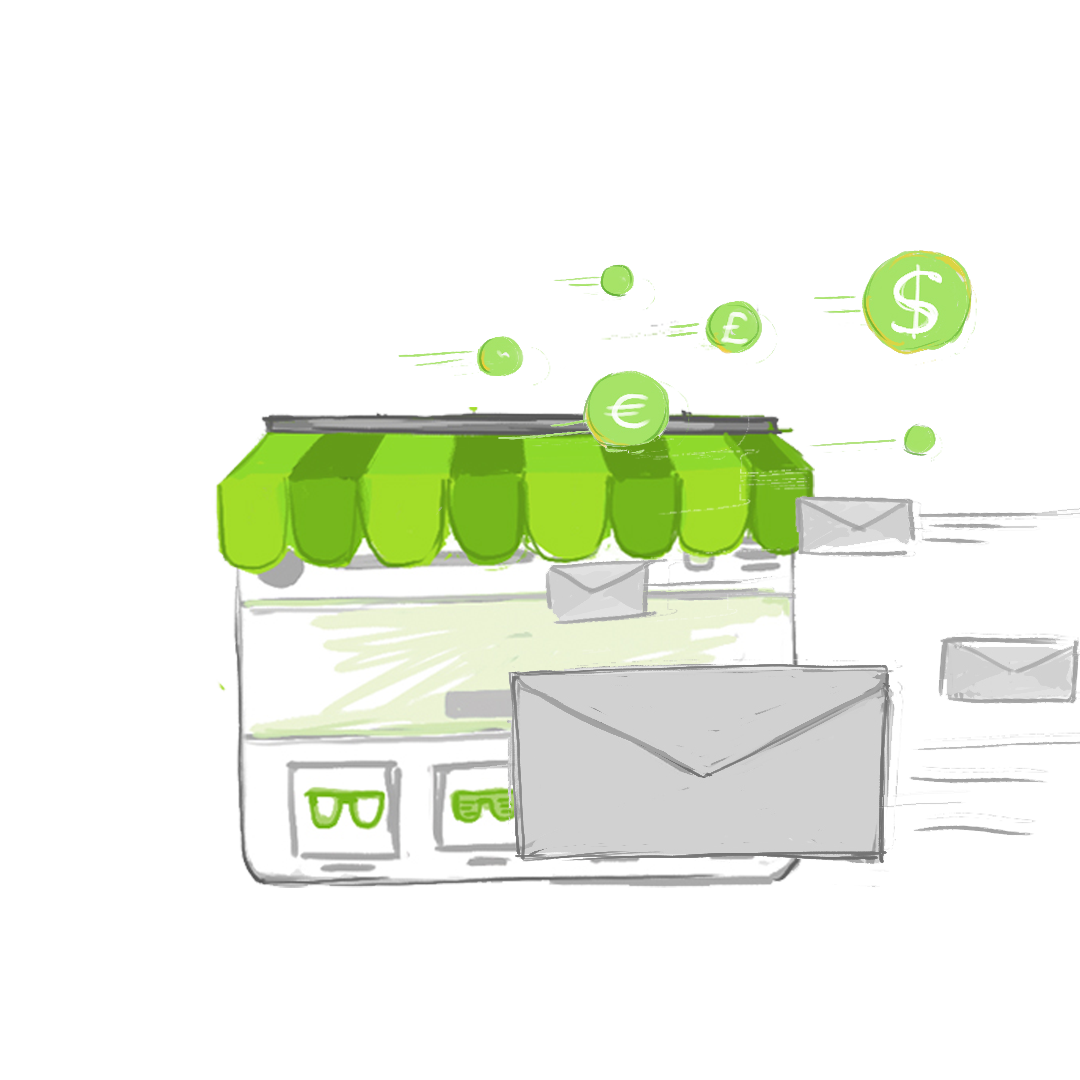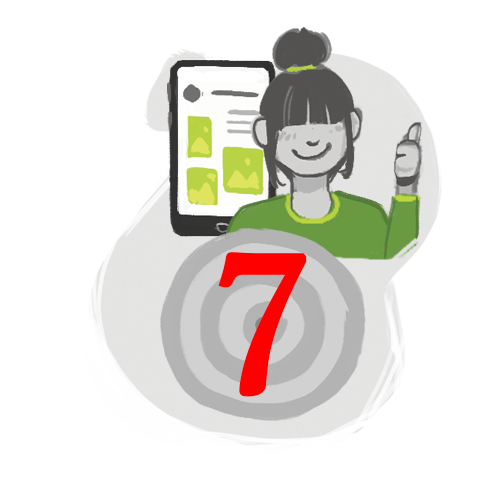Part III: The Most Effective Email Lead Strategies

Introduction: Closing the Deal with an Email Marketing Campaign
By the time you are sending out email ad campaigns, you hopefully have already accomplished a few promotional goals to increase sales on Shopify:
- Creating retargeting ads on Facebook campaigns for effective Facebook marketing
- Utilizing Google adwords retargeting to concentrate on likely customers
- Keep track of your Shopify sales funnel – what level of awareness do site visitors have of your product?
Simply put, email marketing proposals are one of the final steps in the “sales funnel.” Generally speaking, it should not be the first time the customer has heard from you! Email leads can come from retargeting ads on Facebook or Google adwords retargeting, but the key point is they have already been identified and targeted to up your chances closing the deal and increasing your Shopify sales!
While part I and II of our email marketing series focused on the basic framework of email ad campaigns, as well as how to construct an effective email marketing subject line and template. Part III closes out the series by providing a more in-depth analysis of why some email marketing proposals help increase sales on Shopify, while others get you labelled as “spam” by potential customers. There are 6 key strategies we discuss below, along with other helpful tips – enjoy!
Have Decisive Intent with Email Marketing Subject Lines
We mentioned a few generic examples of email marketing subject lines in Part II (link here), and just remember that, at this point, folks know you are trying to sell something. There’s no need to dress it up as “informational” or “telling a story” – it will get old quick. Cut the point, and present a high-value proposition in the email marketing subject line with clear intent.
We’ve organized some of the best email marketing and lead generation strategies below:
1. Abandoned cart emails
Customers are so used to browsing and leaving open a gazillion tabs that they may have accidentally left your page before purchasing! Send a friendly reminder with an email marketing subject line like, “Hey! You Forgot Something 😊.” It’s a proven method to help increase sales on Shopify
2. Product follow up email
Send an email following up if a product is viewed or purchased. It shows a level of engagement that makes the customer feel you are doing your best to cater to their interests. An email marketing subject line could read, “We saw you viewed one of our products, but we think you’ll like this one even more!”
3. Promotional Offer
For any seasonal specialty, have a promotional offer ready – it’s one of the best ways to remain topical and relevant to your audience. It’s St. Patrick’s Day? Promo Code “Lucky10.” It’s Labor Day? “DayOff10.” MLK’s birthday? You know the drill. Some companies go so far as to send birthday promo codes, which is truly a unique, one-of-a-kind way to connect with your customer base!
4. “Come Back Emails”
What a great way to bring old customers back in: offer a nice coupon discount after the customer has stopped engaging with your website or products for 3-4 months.
5. “Leave a Review for a Coupon” Email
These offers ask the customer to leave a nice review in exchange for a promo code on your next purchase. A little “You scratch my back, I’ll scratch yours,” type of deal 😉
6. Loyal Customer Appreciation Emails
If your Shopify store data reveals that certain customers have had multiple “purchase” events on your site, and have remained committed to regularly visiting your Shopify site for over a year, consider having a special “Thank you for your loyalty,” promotion for them. Think about it – with all the options online, they have continued to stick with you! Reward that the right way, and you will build an audience that feels appreciated and acknowledged for their patronage. Over time, your Shopify sales will increase dramatically with customer retention marketing strategies like this one.
Segment Your Audience to Who Receives What Email Ads
Don’t blast emails – segment your audience to the most granular detail. Some business owners report it took the conversion rate on the email from 11% -> 40% by segmenting the audience.
Ask questions like, “Has this customer purchased before? How long has it been since they visited the site? Where did they first hear about us? When was the lasts time we reached out?”
Make sure customers receive only the most relevant emails to their interests. How do you surmise where to segment each potential customer? By reviewing and analyzing previous customer engagement and reported “events” recorded by services like Google Analytics. You can break down who receives what email based on demographic info, as well. That way, you can have an email marketing subject line catering specifically to different age brackets or regional locations.’
One more thing – make the email look fun to click on! Add email gifs and little touches like that, it could help brighten your customers day, and they will thank you for that 😊 Put effort into humanizing the message for each segment of your audience to make the best email ad campaign possible.
Conclusion – Help Managing your Email Ad Campaigns
Analyzing the data to segment your audience – as well as generating creative email marketing subject lines – may seem like a fairly arduous task, but it’s well worth the increased sales on Shopify. If you feel you could benefit from some online advertising expertise, reach out to try a free demo by Ad360 today!
We are a certified Google partner and can run every facet of your advertising efforts online. We can balance personalizing your email retargeting ad campaigns while automating the most time-consuming aspects of the process. Cheers and sell well!
What is Marketing’s “Rule of 7”?

Introduction: The More Frequent the Ads, the More Frequent the Sales
We’ve mentioned in previous posts that customers online need to see your ads multiple times before there are convinced your products are the solution to their problems. We’ve referenced the number “7” in previous articles for the number of times a customer notices your ads before seriously considering buying and boosting your sales.
Where does the “rule of 7” come from in marketing?? Is it true? How does it apply to ecommerce?
This post explores the significance of the “Rules of 7” and how it can be applied to drive traffic to your store, increase your sales, and offer a clearer framework for your marketing strategy!
“Rule of 7” – Half-Myth, Half-Truth
For history buffs, it’s interesting to note that the “rule of 7” came from 1930s Hollywood movie execs. Their marketing research showed moviegoers, on average, needed to see a movie poster 7 times before buying tickets.
So, while the “rule of 7” holds weight in that regard, online shopping and ecommerce are a far different animal from 1930s America! Customer tastes have changed, the medium of advertising has changed, and so effective promotional methods have evolved, as well.
At the same time, the concept that customers usually need multiple exposures to your ads before purchasing is undeniably true. The more times potential customers see your ads, the more likely they are to buy from your store, on average. This could mean seeing a mobile ad, Facebook ad, and your inclusion on the Google search engine – or some other combination of media exposure. Regardless, it’s best to picture that your ads become part of the “mental steps” a customer takes when picking what to purchase.
Overall, the “rule of 3s” may apply better to the Internet age. After three or more exposures to your advertisements, customers become acutely aware of your brand, and the majority begin considering your products a viable solution to their problems. Increased sales will follow!
Standing Out in a Flood of Information
The difficulty of the ecommerce ecosystem is how customers are flooded with ads and information constantly. this flood of information means your name and brand needs to pop up multiple times, ideally in varying formats, before the customer begins to consider your products as a viable solution to their problem.
To maximize the results of your marketing campaign, you cannot just put the same ads in the same place over and over. Depending on customer, you need to communicate in different mediums with different approaches. For example, maybe you start with a Facebook informational ad campaign, collecting some user emails through retargeting software. You use the data collected from the first ad campaign to specifically retarget the customer with a different ad that more directly responds to their interests. Finally, you send the customer an email with a special “first time user” deal. After that, you hopefully have pushed the customer along the sales funnel to the point they regularly visit your site for good deals. Over time, you become a regular step in their “mental process” for buying new products.
The “Rule of 7” Re-Enforces the Importance of Ad Retargeting
We have spoken a lot about ad retargeting here at Ad360 – and for good reason. It is mind-boggling the number of good companies, selling great products, that shoot themselves in the foot by not taking advantage of retargeting. After one view, chances are the customer totally forgets the name of your business… but the captured data doesn’t forget! From there, you can continue to fine-tune your message, catering to the user at each step of their mental process until they feel comfortable making a purchase from your site.
Conclusion: Tailoring your Ads to Respect the “Rule of 7”
Switching up your ad banners and promotional outreach at every step of the customer’s mental process can be difficult by yourself. One false move, and they may jump off the wagon, ignoring your future customer outreach efforts.
If you feel you could use some support staying on track with your customers until they finally purchase from your store, try a free demo by Ad360 today! We provide best-in-class ad retargeting services, empowering your business to boost sales through media exposure across all devices, social media, and search engine. Your customers will be impressed with the variety of outreach, and you can control every campaign under one roof – Ad360. 😊